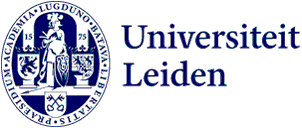947 zoekresultaten voor “drug” in de Publieke website
-
Allosteric modulation and ligand binding kinetics at the Kv11.1 channel
Promotor: Prof.dr. A.P. IJzerman, Co-Promotor: L.H. Heitman
-
Inhibitor Selectivity: Profiling and Prediction
Less than 1 in 10 drug candidates that enter phase 1 clinical trials actually gets approved for human use.
-
Dosing considerations for preterm neonates: from pharmacometrics to clinical practice
Prematurely born neonates require, amongst others, pharmaceutical therapy. Dosing guidelines for these therapies are often based on data from term born neonates or older infants, while these are not necessarily similar to prematurely born neonates.
-
Phenotypic screening with 3D cell-based assays
Traditional drug discovery approaches have been hampered by (in vitro) cell-culture models that poorly represent the situation in the human body.
-
Unraveling the drivers of antimicrobial pharmacokinetic variability in individuals with obesity and hospitalized patients with multimorbidity
Obesity may alter how a person absorbs, distributes, metabolizes or excretes medication. This thesis describes how obesity affects drug levels in the blood for antimicrobial agents, such as ciprofloxacin and fluconazole.
-
The activation mechanisms of G protein-coupled receptors: the case of the adenosine A2B and HCA2/3 receptors
Promotor: A.P. IJzerman
-
Systems pharmacology of the endocannabinoid system
In this thesis, a system pharmacology approach, integrating metabolomics, pharmacology and chemical biology, was applied to understand and modulate the endocannabinoid system across different model systems (cells, zebrafish, mice and humans).
-
Discovery of novel inhibitors to investigate diacylglycerol lipases and α/β hydrolase domain 16A
Promotor: H.S. Overkleeft, Co-promotor: M. van der Stelt
-
Ecological validity of biomarkers in drug research
Promotie
-
Optimizing antifungal treatment through pharmacometrics: dosing considerations to enhance outcome
Fungal infections pose a significant threat to individuals with compromised immune systems and despite advancements in diagnosis and treatment, they continue to jeopardize patient’s health.
-
Unfolding the regulation of stress response pathways upon liver injury
Drug-induced liver injury (DILI) is one of the main reasons for drug attrition during pre-clinical and clinical phases of drug development as well as for drug withdrawal post-marketing.
-
Unraveling multifaceted roles of Grainyhead-like transcription factor-2 in breast cancer
Breast cancer is the most common cancer in women worldwide. Metastasis, the process by which cancer cells spread to other parts of the body, makes treatments less effective. It is important to unravel the mechanism of metastasis.
-
Mitochondria in chemical-induced toxicity
Chemical-induced organ toxicity is a major concern in the development and use of chemicals, including drugs, pesticides, industrial chemicals and cosmetics. In the last decades, the onset and progression of chemical-induced organ toxicity has been linked amongst others to perturbation of mitochondri…
-
Lost in translation: The toll-like receptor 7 induced pharmacological challenge model of the skin
This thesis investigates a pharmacological challenge model induced by Toll-like receptor 7 (TLR7) activation, focusing on skin inflammation and its implications for early drug development.
-
First-pass and systemic metabolism of cytochrome P450 3A substrates in neonates, infants, and children
Growth and development affect the metabolism of drugs administered to neonates, infants, and children.
-
Resistance to PARP inhibition by DNA damage response alterations in BRCA1/2-deficient tumors
Inactivating mutations in BRCA1 or BRCA2 genes predispose to several types of cancer.
-
Novel analytical approaches to characterize particles in biopharmaceuticals
Particles are omnipresent in biopharmaceutical products. In protein-based therapeutics such particles are generally associated with impurities, either derived from the drug product itself (e.g. protein aggregates), or from extrinsic contaminations (e.g. cellulose fibers).
-
2012
LIBC PUBLIEKSDAG 'DRUGS & THE BRAIN' (in Dutch)
-
The LeiCNS-PK3.0 model development and applications: healthy-to-diseased CNS pharmacokinetic translation
Accurate prediction of the unbound drug concentration-time profile at the CNS target site is crucial for the assessment of the right drug concentration-effect relationship. PBPK models have supported the PK prediction of the CNS target sites and the translation of PK data between species and between…
-
Force sensing and transmission in human induced pluripotent stem-cell-derived pericytes
Pericytes, the mural cells of blood microvessels, are important regulators of vascular morphogenesis and function that have been postulated to mechanically control microvascular diameter through as yet unknown mechanisms.
-
Metabolomics study of blood vessels-on-chip model
Endothelial dysfunction and microvascular diseases are key drivers of cardiovascular disease, the world's leading cause of death.
-
Chemical genetic approaches for target validation
Drug development is a time- and resource-consuming process that starts with the discovery and validation of a (protein) target that contributes to pathogenesis or disease progression.
-
Healthcare Information System Engineering: AI Technologies and Open Source Approaches
Healthcare Information Systems (HIS) are essential for modern healthcare delivery, yet their development faces significant challenges including heterogeneous data formats, regulatory compliance, and the growing demand for AI-driven decision support.
-
Development of novel anti-cancer strategies utilizing the zebrafish xenograft model
In this thesis, we will utilize embryonic zebrafish tumour models to understand the interaction between engrafted human cancer cells and macrophages from the host, test drug administration modalities and anti-cancer efficacies of newly-developed PDT and PACT compounds, and test a light-triggered liposomal…
-
Role of integrin adhesions in cellular mechanotransduction
Promotor: B. vd Water, T. Schmidt, Co-Promotor: E.H.J. Danen
-
 Roxanne Kieltyka
Roxanne KieltykaWiskunde en Natuurwetenschappen
-
Dubbelslag tegen ontstekingsziekten
Combinatie van twee potentiële geneesmiddelen geeft zicht op een 'superblokkade' van een overactief immuunsysteem, schrijven Leidse wetenschappers in Nature. De doorbraak was het kristalliseren van het betrokken membraaneiwit.
-
Huidonderzoeker pleit voor multidisciplinaire samenwerking: ‘Ik wil expertise bundelen.'
In de dermatologie zou op grote schaal multidisciplinair moeten worden samengewerkt tussen instituten en specialisten, stelt Robert Rissmann, hoogleraar Translationele Dermatologie, in zijn oratie van 8 juli. Hij bouwt een infrastructuur om pre-klinisch en klinisch huidonderzoek prominent op de kaart…
-
Pulling the strings on anti-cancer immunity
Promotores: J. Jonkers, K.E. de Visser
-
Quantitative pharmacology of antimicrobials
Antimicrobial drugs constitute a fundamental part of modern medicine. The global rise in antimicrobial resistance poses a major threat to global health.
-
Towards predictive cardiovascular safety: a systems pharmacology approach
Promotores: Prof.dr. M. Danhof, Prof.dr. D.R. Stanski
-
A Model Membrane Approach to Elucidate the Molecular Organization in the Skin Barrier
Promotor: J. A. Bouwstra
-
Immunity in atherosclerosis: novel assays, biomarkers and therapeutic approaches
Atherosclerosis is a progressive disease resulting in the formation of an arterial plaque. Despite lipid lowering, recurrent cardiovascular events remain a risk. While atherosclerosis is primarily lipid-driven, the immune system plays a critical role in the pathophysiology.
-
Evaluation of the zebrafish embryo as an alternative model for hepatotoxicity testing
Promotor: Prof.dr. B. van de Water, Co-promotores: L.T.M. van der Ven, A.S. Kienhuis
-
Quantitative pharmacological modelling for optimizing treatment of sepsis
Sepsis is a life-threatening condition caused by a dysregulated host response to infection, it is associated with significant morbidity, mortality, and with a high financial burden on global healthcare systems. Bacterial infections are the primary cause of sepsis, but the growing prevalence of antimicrobial…
-
From every angle: novel insights into CC chemokine receptor 2 pharmacology
The CC chemokine receptor 2 (CCR2), a member of the G protein-coupled receptor (GPCR) superfamily, is widely involved in autoimmune and inflammatory diseases. However, no drugs for this receptor have made it to the pharmaceutical market yet.
-
RNA splicing in breast cancer progression
In this thesis, we aimed to better understand the underlying mechanisms involved in TNBC progression and metastasis formation and discover new targets to reduce breast cancer related deaths.
-
The good? The bad? The mutant! Characterization of cancer-related somatic mutations and identification of a selectivity hotspot in adenosine
G protein-coupled receptors (GPCRs), one of the largest families of membrane proteins, are responsive to a diverse set of physiological endogenous ligands including hormones and neurotransmitters.
-
Single-cell immune profiling of atherosclerosis: from omics to therapeutics
Acute cardiovascular syndromes, including myocardial infarction or stroke, are the principal cause of death in the Western society. The main underlying pathology of cardiovascular diseases is atherosclerosis, which is caused by the accumulation of lipids and inflammatory cells in the vessel wall, in…
-
Systems pharmacology of the amyloid cascade
According to the amyloid cascade hypothesis, accumulation of beta-amyloid (Aβ) peptides initiates the pathological cascade in Alzheimer's disease (AD).
-
Using insertional mutagenesis to identify breast cancer drivers and therapy resistance genes in mice
In this thesis, we used genetically engineered mouse models to identify genes and pathways that are involved in ILC formation and in the development of resistance to FGFR-targeted therapy.
-
Knowledge discovery from patient forums: gaining novel medical insights from patient experiences
Patients share valuable advice and experiences with their peers in online patient discussion groups.
-
Mechano-transduction mediated by integrin-based adhesion complexes: integration of cytoskeleton and adhesion dynamics
In this thesis, we focus on novel proteins/mechanisms that regulate integrin-adhesion mediated mechano-transduction.
-
Coiled-coil biomaterials for biological applications
This dissertation contains four works during my PhD. Different biomaterials have been designed based on coiled-coil peptides. These biomaterials have a range of applications, inclusing drug delivery, cell sorting to cell-cell fusion.
-
Design and synthesis of metal-based chemotherapeutic agents for targeted DNA interactions or DNA repair pathway modulation
The research presented in this thesis explores the chemotherapeutic potential of metal-based compounds as chemotherapy agents, with an initial focus on the synthesis and DNA interaction studies of platinum and palladium compounds utilizing the [Pt(bapbpy)]2+ scaffold. The study identifies intercalation…
-
Identification of novel targets in prostate cancer progression
Promotor: B. van de Water, Co-promotor: E.H.J. Danen
-
Adjuvanted nanoparticulate seasonal influenza vaccines
Promotor: W. Jiskoot, Co-promotor: A. Kros
-
Environmental and metabolomic study of antibiotic production by actinomycetes
Promotor: Prof.dr. G.P. van Wezel
-
From data to models: reducing uncertainty in benefit risk assessment: application to chronic iron overload in children
Promotor: Prof.dr. M. Danhof, Co-promotor: O.E. Della Pasqua
-
Visualization of Vitamin A Metabolism
Vitamin A or retinol is essential in embryonic development, the visual cycle and the immune system.
